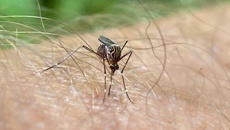
Pacific Island and Kiwi kids are among the fattest and least healthy in the world, a new study has found.
The study, published in The Lancet today, found Pacific Island children between the age of 5 and 19 had the highest Body Mass Index (BMI) in the world in 2019, with New Zealand not far behind.
It compared 65 million school-aged children across 200 countries and territories over the 34 years to 2019.
The most unhealthy growth trends – with too little height gain and/or excess weight gains – were seen in several countries including New Zealand, the USA, Malaysia, Mexico and sub-Saharan Africa.
This study follows hard on the heels of the UNICEF's annual Innocenti report card, which named New Zealand adolescents as some of the most overweight in the OECD. Out of 41 OECD and EU countries, New Zealand was ranked second-to-worst for childhood obesity.
New Zealand girls started with a BMI healthier than the global average at age 5 but gained too much weight for their height as they got older, the study found.
Pacific island countries in Oceania had the highest average BMI in the world in 2019, surpassing 28kg/m sq for 19-year-olds in many of these nations.
Both girls and boys in New Zealand had a progressively higher BMI relative to the global median as they became older.
The study found the difference between countries with the lowest and highest average BMI was 9–10kg/m sq.
According to the report authors, the finding that children in some countries grow healthily to the age of 5 but do not continue to do so during school years shows an imbalance between investment in improving nutrition and growth across ages.
Measures to promote healthy growth could include agricultural and food-system policies that increase the availability and reduce the cost of nutritious foods; cash transfers and food vouchers towards nutritious foods for low-income families; free healthy school meal programmes; fiscal and regulatory policies that restrict the consumption of unhealthy foods; the provision of affordable healthy housing, clean water, and sanitation; and the provision of facilities for play and sports in the community and at school, they said.
"Taking these actions would enable children to grow taller without gaining excessive weight, with lifelong benefits for their health and wellbeing," the study concluded.
One of the New Zealand authors, Professor Jim Mann described obesity as a "silent killer" pandemic and said this study showed the issue was escalating in New Zealand.
Mann said a pressing issue was the lack of nutrition data in New Zealand and called for a national nutrition survey to be carried out immediately.
"New Zealand has not had a survey since 2002 so we don't actually know what New Zealanders are consuming," he said.
"We have also called for school-based healthy food and drink policies and this study reinforces the need for such policies as well as restrictions on advertising unhealthy foods to children."
Collin Tukuitonga, Associate Dean Pacific and Associate Professor of public health, at University of Auckland said it was an important study which confirmed much of what we already knew.
"The study findings have important implications for nutrition policies in New Zealand and the Pacific Islands including considerations for agriculture and food policies," he said.
But, Emeritus Professor Elaine Rush, Professor of nutrition at AUT, said body size and growth trajectories were imperfect measures of nutritional quality and lifelong health advantages and risks when it came to Indigenous, multi ethnic and migratory populations like New Zealand.
"The highest prevalence of type 2 diabetes in New Zealand occurs in Pacific, Māori and Asian, not European. Yet Pacific and Asian are the two extremes of BMI, weight and height measures," she said.
Take your Radio, Podcasts and Music with you









